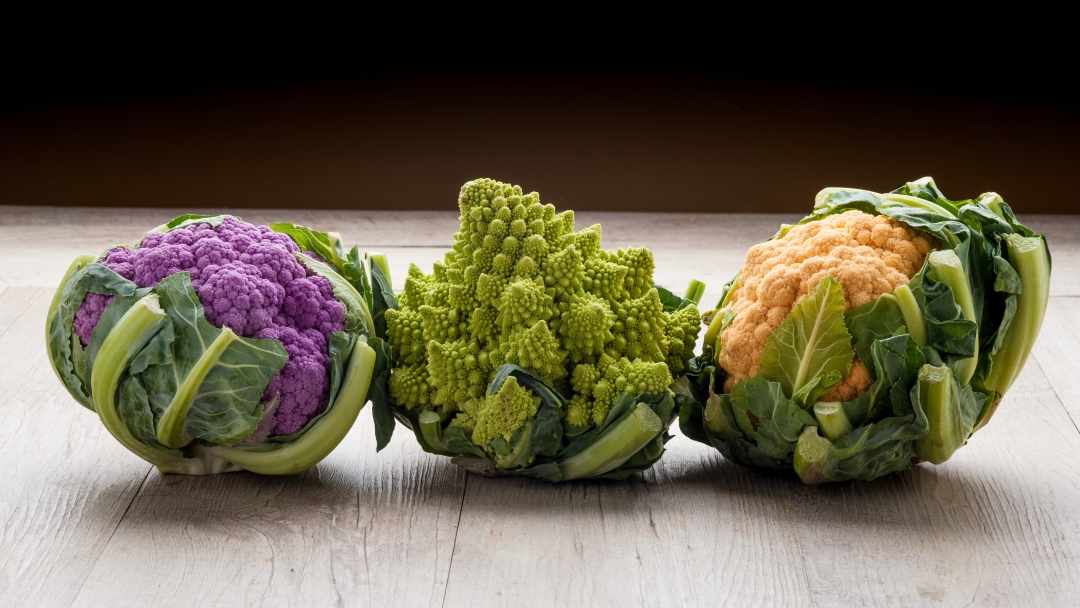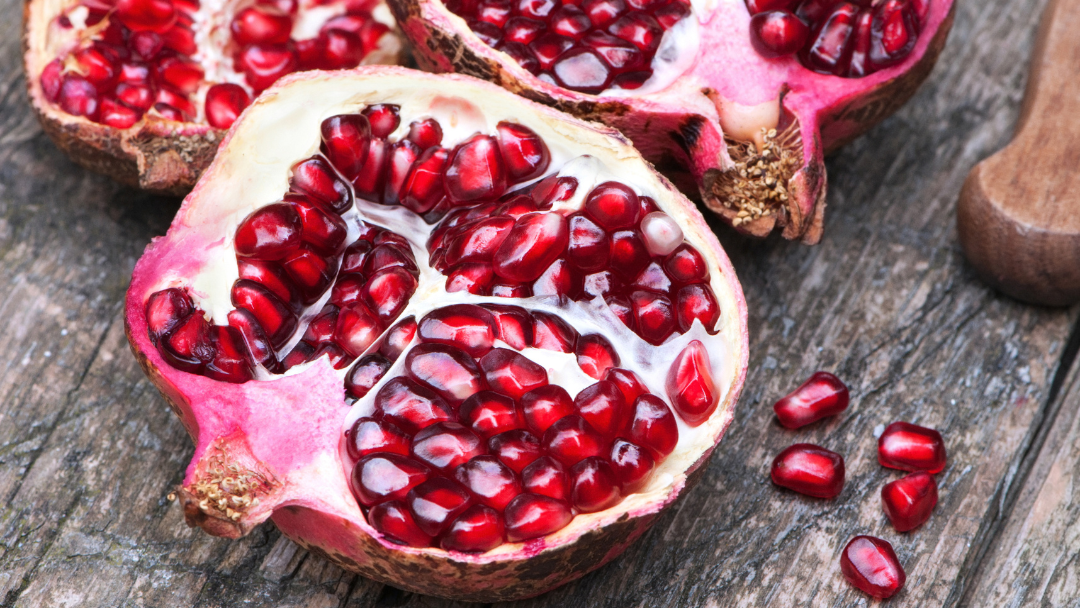Photo: Valerio Pardi/Shutterstock.com
Do you have a sweet tooth? Or are you naturally drawn to bitter foods? Your natural inclinations for taste preferences may have a much larger impact on your health than you might think. The latest research points to a few health benefits for those who are bitter tasters. Let’s see what the literature has to say!
Toxicity and Bitterness
For most people, bitter-tasting foods rank as the worst tasting on the list. As one of the main taste categories (which also includes sweet, sour, salty, and umami), many associate bitter with toxicity, at least historically, which may be one reason for the aversion to its taste. Many toxic foods are bitter, but there are also some beneficial—or at least not toxic—bitter foods as well, such as cruciferous vegetables, green tea, grapefruit, coffee, and beer. Additionally, not all toxins taste bitter; some have no taste at all while others have a different taste.
In one study that reviewed the substances in the bitter database (using data from BitterDB), roughly 700 compounds were considered bitter or activate at least one of the receptors, while about 2,000 other compounds do not register as bitter. Using two other databases that brought in data from additional official lists of toxic substances, the researchers compared the databases and found roughly 60% of the toxic compounds were predicted to be bitter, although only 0.3% were known to be bitter. Roughly 2/3 of the known bitter substances had some level of toxicity, but only about 3% are highly toxic.
These findings point to a mild association between bitter taste and toxicity, but bitter taste cannot be an accurate way to determine if something is toxic. Thus, there are probably more roles that bitter-taste receptors play beyond just determining whether something is potentially toxic or not.
The 411 on Bitter Tasting
The bitter-tasting receptors, a subclass of G-protein coupled receptors (GPCRs), are known as Taste 2 Receptors (abbreviated as TAS2Rs or T2Rs). There are 25 known bitter-taste receptors in humans, some of which are narrow and other broad in terms of the substances that activate them. The capacity to taste bitter and other tastes, including whether you are a supertaster, might not have an association to the actual number of taste buds in the body. Thus, it is more about whether the receptors are sensitive and activated rather than how many actually exist.
As with some of the other taste receptors, bitter-taste receptors do not just lie on the tongue. Researchers have found T2Rs in the respiratory system, genitourinary system, arteries, thyroid, gastrointestinal tract, and the brain. (Some of the research is a mixture of mouse and human studies.) There are hypotheses surrounding the impact of bitter taste affecting other aspects of life, such as stimulating hostility.
Polymorphisms in the taste receptors, including those for bitter, can impact taste perception and thus diet and food preferences. For example, one study found the sensitivity to bitter tastes predicted whether young children (3 – 6 years old) would accept spinach when provided. Those sensitive to bitter were more likely to dislike raw spinach. Another study found that variation in the bitter taste receptor gene, TAS2R38, was relational to the taste perception threshold of 6-n-propylthiouracil (PROP). The study found 3 variations that demonstrated a bitter “taster”, a bitter “non-taster, and individuals who had lower sensitivity tasters.
A study in young women found those more sensitive to a bitter compound using PROP test were less likely to want to consume bitter foods such as coffee, tart citrus, and cruciferous vegetables. Another study found a negative correlation between bitter tasters and those who preferred dark chocolate and chili peppers. The dislike of grapefruit juice may also be associated with bitter acuity. Another study examined the relationship between gender and perceived bitterness and taste sensitivity in 119 nonsmoking men and women between the ages of 18-69 years. The study found that women have a higher sensitivity to bitter taste leading to aversion. Hypothesized reasons for the more prominent affinity to bitter food disgust mentioned in the study include a greater susceptibility to diseases that may affect taste, hormonal fluctuations, and higher sensitivity cues indicating the presence of toxins in order to protect their offspring.
Children innately prefer sweet tastes as an evolutionary protection mechanism against potential toxins, and children labeled as “picky” eaters may be genetically predisposed to have a greater sensitivity to bitter foods. Understanding the underlying factors of “picky” eating could aid in the intervention methods used to encourage children to eat vegetables and fruits that the child may perceive as bitter. A meta-analysis looking at the relationship of taste on food choices in adolescence found sensitivity to bitter and sweet taste to be interrelated and that adolescents more sensitive to bitter taste had a preference for sweet taste and less preference for bitter vegetables.
Two well-studied subsets of bitter taste thiourea compounds are phenylthiourea, PTC, and 6-n-propylthiouracil (PROP). PTC and PROP are not found in foods, but they are in the same family as thiourea-containing compounds that exist in cruciferous vegetables, such as the glucosinolates associated with goitrogens. The thiourea compound is the reason these vegetables have a more bitter taste. PROP tasters tend to have a higher intensity for tastes beyond bitter, including sweet and fat. Out of the genes associated with bitter tasting, one of the best studied are those related to the TAS2R38 gene, which codes for the perception of a bitter-taste compound phenylthiocarbamide, or PTC.
There may also be some sex differences in the impact of the polymorphisms on taste preferences. One study also found that bitter tasters based on having the gene variants to taste PTC and PROP made it less likely to become a smoker, since nicotine and other substances in tobacco products contain bitter compounds. There is also an association between bitter-taste receptors polymorphisms and glucose and insulin homeostasis, which could impact diabetes risk.
Bitter Tasting and Sugar Preference
One way your genetic predisposition to bitter sensitivity may play a role in your health comes from its impact on sugar preference, aka having a sweet tooth. A variation in one of the bitter receptor genes, TAS2R38, has been associated with sweet preference in children. Children whose genotypes make them more bitter sensitive prefer to consume sweeter foods than those who are insensitive to bitter. This tendency can lead them to consume more sugar in their diets than those who are bitter insensitive. Diets high in sugar, especially in childhood, have been linked to obesity, diabetes, heart disease, and other chronic illnesses. Of course, obesity and associated chronic illnesses are complex, with no single reason for the development.
In one study, children with a variant in the bitter gene making them more bitter sensitive had a lower threshold for identifying sugar than others, including those who had the genotypes in the sweet-related genes. Their diet also contained more added sugar per kcal compared to those who had the insensitive gene. This points to a relationship between sweet and bitter tasting. One explanation could be that certain sweet substances bind to bitter receptors, or it could be that the changes in diet could affect the sensitivity to tasting sugar through epigenetic gene expression changes.
Although bitter tasters may also prefer sweet foods, it may not always correlate to obesity and other outcomes. There may be a correlation between your ability to taste bitter and BMI, at least in young children. In one study looking at children aged 3 to 6, non-tasters were more likely to be in the overweight category compared to tasters.
There may be other interactions between the different taste receptors, such as umami peptides suppressing bitter taste through interacting with the bitter receptors. Although being a bitter taster may make sweets tastier, there are health benefits that come from being a bitter taster as well.
Bitter Taste and Respiratory Health
Bitter taste receptors are found in the epithelial cells of the lung tissue, where they play a role in innate immunity and may activate the relaxation of smooth muscle in the lungs. They also help identify potentially harmful bacteria to help fight against infection. As such, bitter tasters would be more likely to fight off an infection than those with the non-taster polymorphisms, at least based on mechanistic studies.
One study did find a correlation, making having a nonfunctioning genotype (non-tasters) an independent risk factor for requiring surgical intervention after failing medical therapy for chronic rhinosinusitis (CRS). In another small study in those with CRS undergoing surgery, the non-tasters had a higher chance of having colonized pathogens than those who were tasters or supertasters.
Bitter Taste and Gut Health
Bitter taste receptors also line the gastrointestinal tract, as do other taste receptors. In the lower GI tract, T2Rs regulate GI function and play a role in chemoreception. These functions include modulating gut motility, fluid secretion, and gut hormones.
Many of these receptors are in the colon, which is also where the greater number of beneficial bacteria are located. Thus, they may play a role in maintaining a healthy microbiome as well. Similar to how the T2R (bitter-taste receptors) play a role in the innate immune system in the lungs, it may also help regulate the mucosal immunity of the gut lining, helping fight against pathogenic bacteria to keep the gut microbiome in a healthy ratio rather than slipping into dysbiosis.
Bitter-taste signaling may also play a role in gastric acid secretion, which may be one reason for the association between coffee and excessive stomach acid. This effect may be part of why bitters can help with GI disorders, especially those involved in a disturbance in gastric secretion.
Brain Health and Bitter Tasting
There are additional health benefits related to bitter tasting beyond its role in respiratory and gut health. One study found that ingesting a bitter-tasting solution with quinine in it after rinsing out the mouth increased corticomotor excitability in competitive male cyclists. Although this does not translate to increased performance, it could demonstrate that activating bitter taste receptors may impact the brain in a beneficial way. However, another study did not confirm that result.
There are also studies linking bitter tasting and an increased risk of developing depression and other mood disorders. In one study, those who were bitter tasters also had a heightened hedonic capacity, which correlates with a reduced risk of depression since diminished hedonic capacity is correlated with depression.
There is also an association between Parkinson’s disease and the bitter-tasting genes. In one study, there was a higher number of non-tasters and those with a reduced capability to taste bitter with PD compared to the control group without PD.
Additional Health Links
Children who are bitter tasters may also have a lower risk of developing cavities than non-tasters, and studies have found that PROP and PTC non-tasters and medium tasters are at a higher risk of dental decay and complications than supertasters. Another study found an association between non-tasters and a higher likelihood of dental cavities in children, as well as a higher likelihood of having higher levels of a certain bacteria, Streptococcus mutans, which is associated with cavities. This result may be due to the link between bitter-taste receptor and innate immunity, including in the oral cavity, and it may also be due to food preferences. As discussed, bitter tasters tended to also be more likely to not be sweet likers, while non-tasters did, and consuming sweets is associated with cavities.
Not all studies looking into the associations between health conditions and bitter tasting demonstrate a positive. In one study, those who were PTC tasters had an increased risk of cancer compared to non-tasters, although supertasters did not have the same increased risk. In those above the age of 60, both tasters and supertasters had an increase in the risk of cancer compared to the non-tasters. However, there was not an association between the genetic polymorphism type and cancer risk nor any difference in their intake of fruit or vegetables.
Supporting Your Bitter Taste Capacity No Matter Your Genetics
Many of the benefits of bitter tasting relate to the activation of the receptors and certain polymorphisms involved in how active your receptors are, i.e., whether you are a bitter taster or not. All the mechanisms behind the potential health benefits associated with bitter tasting may not yet be known; however, that does not mean you cannot try to find ways to gain the benefits, even if you are not a bitter taster.
Here are some ideas:
- Try bitters.
- Enhance your taste acuity—check zinc levels. Studies have shown that zinc deficiency, especially in the elderly, may be related to a reduction in taste acuity. A meta-analysis examining 12 trials with a total of 938 subjects found that zinc supplementation in those with a zinc deficiency improved taste disorders.
- Check your thyroid: There is a correlation between hypothyroidism and a reduction in smell and taste perception. One study also found that treatment for subclinical hypothyroidism with levothyroxine improved bitter taste capacity.
- Try berberine: This herb has been shown to stimulate the gut hormones, specifically GLP-1, through bitter-taste-response activation.
No matter your taste preference, it is important to eat many of the beneficial bitter foods, such as cruciferous veggies, leafy greens, green tea, fermented foods, and even coffee, all of which have health benefits beyond their bitter compounds! For those who are non-tasters, this may be easy. For those who taste them too much, it may be difficult to find them palatable. Luckily, there are a few things you can do to improve the taste! You can try adding some lemon juice to work on the bitter taste. Alternatively, adding small quantities of salt or sugar may help the taste, but you want to be careful, as excessive sugar and salt have also been linked to chronic health conditions. A better idea may be to play around with different herbs and spices to season your vegetables to improve the taste.
Not sure if you are a bitter taster? There’s an easy test. You simply purchase some paper strips that are treated with PTC, one of the bitter compounds. Typically, the directions will have you place it on the tongue for about 30 seconds to determine whether you taste it, and to what degree.
As always, talk with your doctor or healthcare practitioner about how your taste preferences and bitter acuity relate to your own health conditions and the best way for you to improve your health.





